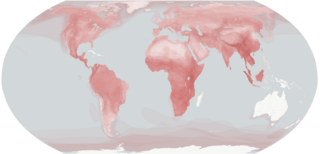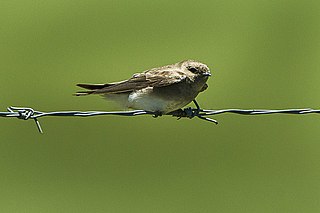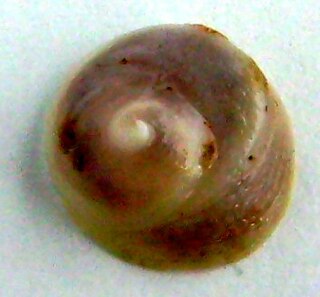
Carnivora is an order of placental mammals that have specialized in primarily eating flesh, whose members are formally referred to as carnivorans. The order Carnivora is the fifth largest order of mammals, comprising at least 279 species on every major landmass and in a variety of habitats, ranging from the cold polar regions of Earth to the hyper-arid region of the Sahara Desert and the open seas. These mammals have a large array of diverse body plans with a wide diversity of shapes and sizes.

The Percidae are a family of ray-finned fish, part of the order Perciformes, which are found in fresh and brackish waters of the Northern Hemisphere. The majority are Nearctic, but there are also Palearctic species. The family contains more than 200 species in 11 genera. The perches and their relatives are in this family; well-known species include the walleye, sauger, ruffe, and three species of perch. However, small fish known as darters are also a part of this family.

Thomas Nuttall was an English botanist and zoologist who lived and worked in America from 1808 until 1841.

Louis Pierre Vieillot was a French ornithologist.

Thomas Say was an American entomologist, conchologist, and herpetologist. His studies of insects and shells, numerous contributions to scientific journals, and scientific expeditions to Florida, Georgia, the Rocky Mountains, Mexico, and elsewhere made him an internationally known naturalist. Say has been called the father of American descriptive entomology and American conchology. He served as librarian for the Academy of Natural Sciences of Philadelphia, curator at the American Philosophical Society, and professor of natural history at the University of Pennsylvania.

Charles Alexandre Lesueur was a French naturalist, artist, and explorer. He was a prolific natural-history collector, gathering many type specimens in Australia, Southeast Asia, and North America, and was also responsible for describing numerous species, including the spiny softshell turtle, smooth softshell turtle, and common map turtle. Both Mount Lesueur and Lesueur National Park in Western Australia are named in his honor.

Thoracica is an infraclass of crustaceans which contains the most familiar species of barnacles found on rocky coasts, such as Semibalanus balanoides and Chthamalus stellatus. They have six well-developed limbs, and may be either stalked or sessile. The carapace is heavily calcified. The group includes free-living and commensal species.

Jean René Constant Quoy was a French naval surgeon, zoologist and anatomist.

The brown-throated martin or brown-throated sand martin is a small passerine bird in the swallow family, Hirundinidae, that is widely distributed across Africa. It was formerly regarded as conspecific with the grey-throated martin and the Madagascar martin.

Ensis is a genus of medium-sized edible saltwater clams, littoral bivalve molluscs in the family Pharidae. Ensis, or razor clams, are known in much of Scotland as spoots, for the spouts of water they eject while burrowing into the sand, when visible at low tide. This term may also colloquially include members of the genus Solen. Ensis magnus are known as bendies due to their slightly curved shell.

Cacatua is a genus of cockatoos found from the Philippines and Wallacea east to the Solomon Islands and south to Australia. They have a primarily white plumage, an expressive crest, and a black or pale bill. Today, several species from this genus are considered threatened due to a combination of habitat loss and capture for the wild bird trade, with the blue-eyed cockatoo, Moluccan cockatoo, and umbrella cockatoo considered vulnerable, and the red-vented cockatoo and yellow-crested cockatoo considered critically endangered.

Tenthredinidae is the largest family of sawflies, with well over 7,500 species worldwide, divided into 430 genera. Larvae are herbivores and typically feed on the foliage of trees and shrubs, with occasional exceptions that are leaf miners, stem borers, or gall makers. The larvae of externally feeding species resemble small caterpillars. As with all hymenopterans, common sawflies undergo complete metamorphosis.

Kuhl's pipistrelle is a species of vesper bat that occurs in large areas of North Africa, Southern Europe and West Asia. It lives in temperate forests, subtropical or tropical dry shrubland, Mediterranean-type shrubby vegetation, temperate grassland, rural gardens, and urban areas. It is a rare and infrequent visitor to Britain, usually only detected by sound-recordings. A specimen held at the Palestine Natural History Museum is the first record of the species to be "ensnared by a plant in the Arab world".

The Calyptraeidae are a family of small to medium-sized marine prosobranch gastropods.

Bomarea goniocaulon is a species of flowering plant in the family Alstroemeriaceae. It is native to Peru and to Ecuador, where it has been collected only three times in the Pichincha Province. It is known from mountain forest habitat.

The Balanomorpha are an order of barnacles, containing familiar acorn barnacles of the seashore. The order contains these families:

Clavatulidae is a taxonomic family of sea snails, marine gastropod mollusks in the superfamily Conoidea. The family is not well differentiated morphologically.

Ranularia is a genus of predatory sea snails, marine gastropod mollusks in the family Cymatiidae.

Ergalataxinae is a taxonomic subfamily of small to medium-sized predatory sea snails, marine gastropod mollusks within the family Muricidae, the rock snails. In this subfamily, the aragonitic shell has 0–2 varices.

Rhipiceridae is a family of beetles found worldwide. The larva of rhipicerids are parasitoids of cicada nymphs. Rhipiceridae and Dascillidae form the super family Dascilloidea, within the Elateriformia.



















